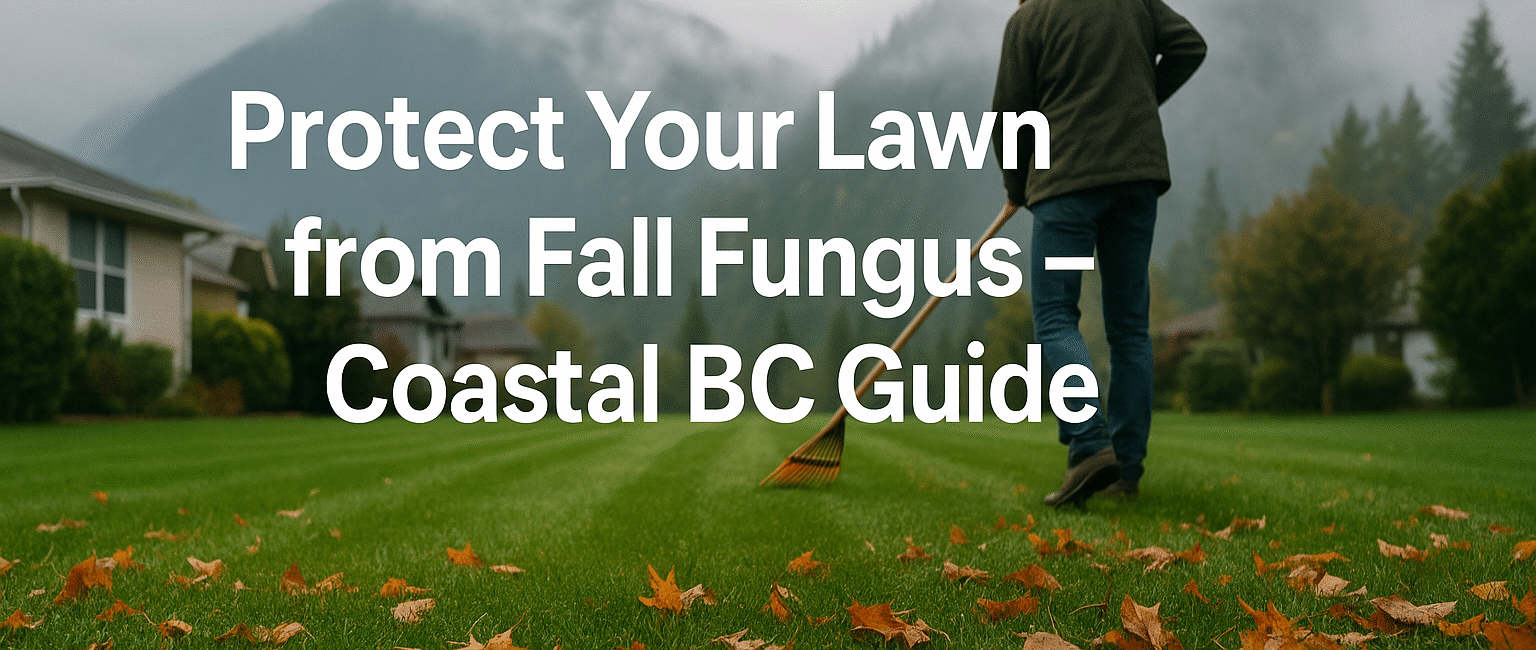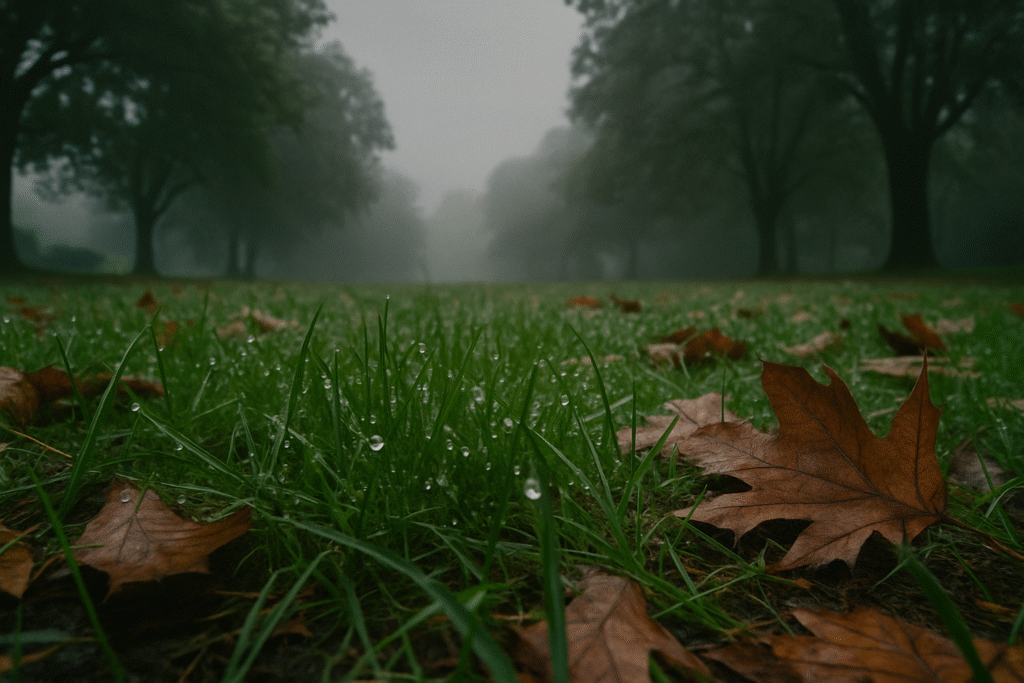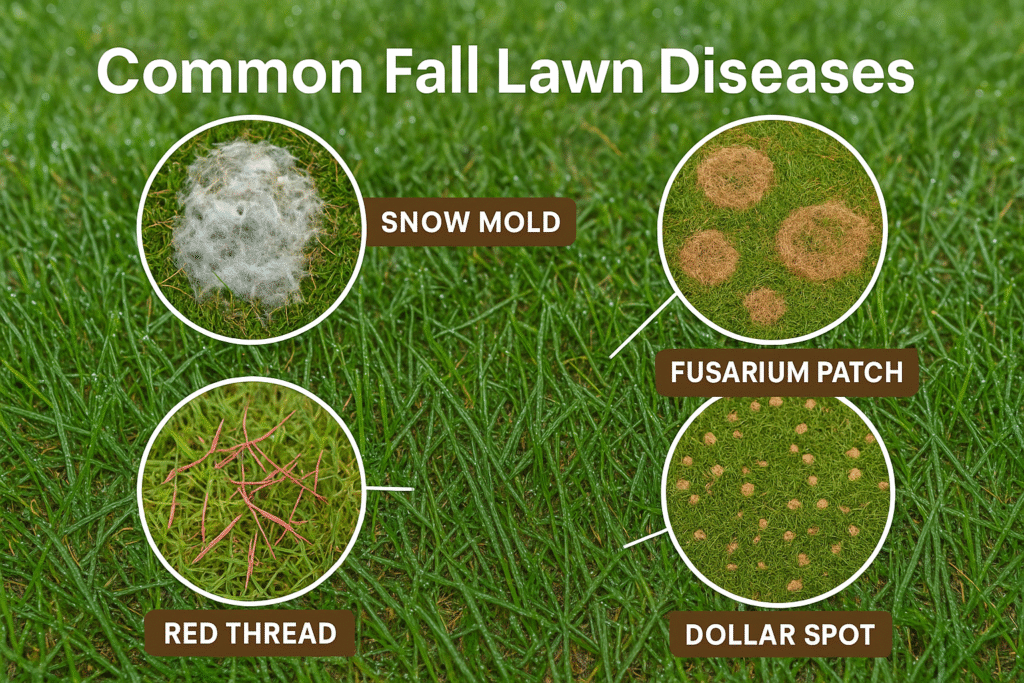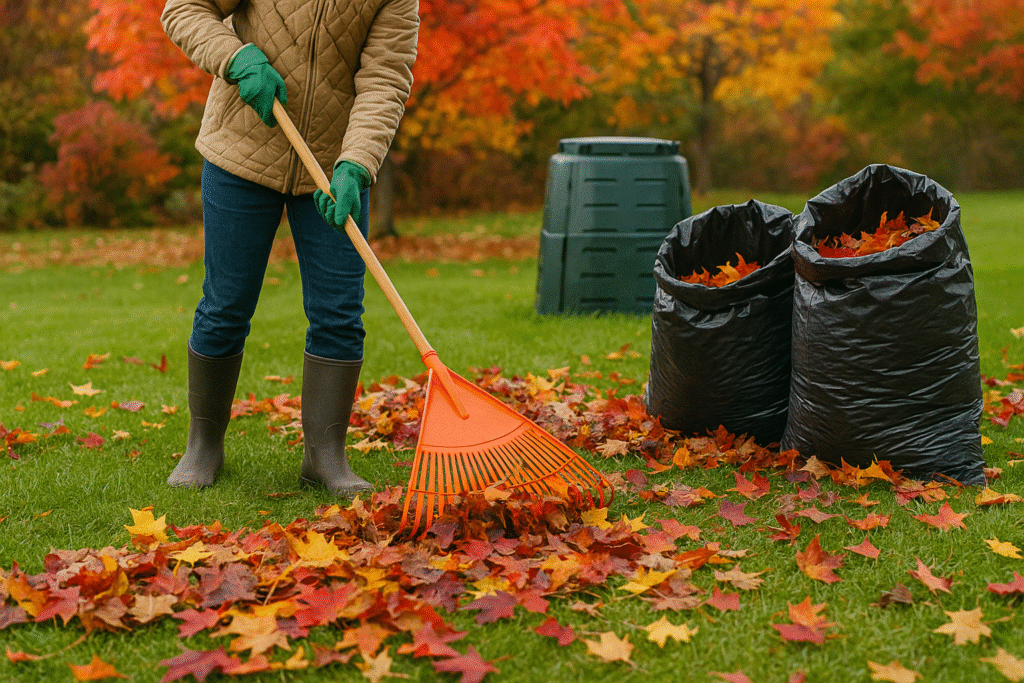
As the coastal BC rains roll in and temperatures drop, your lawn becomes a prime target for fungal diseases that can devastate your beautiful grass through winter and into spring. Don’t let months of careful lawn care go to waste – taking action now can save you hundreds in lawn restoration costs come spring!
🌧️ Why Coastal BC Lawns Are Fungus Magnets
Our mild, wet winters create the perfect storm for lawn diseases. The combination of:
- Extended periods of moisture from October through March
- Moderate temperatures that rarely freeze completely
- Dense morning fog and poor air circulation
- Heavy clay soils that retain water
…makes Vancouver, Victoria, Surrey, and other coastal communities hotspots for lawn fungus problems.

🔍 Common Fall Lawn Diseases in BC
Snow Mold (Pink and Gray)
Even though we don’t get heavy snow, the cool, wet conditions under fallen leaves create identical problems. Look for circular patches of matted, discolored grass.
Fusarium Patch
Those unsightly brown circles that appear in fall? That’s likely Fusarium patch, thriving in our 40-60°F temperature range with high humidity.
Red Thread Disease
If you notice pink or red thread-like growths on grass blades, this fungus loves our moderate coastal climate and will spread rapidly without intervention.
Dollar Spot
Small, silver-dollar-sized brown patches are telltale signs of this disease that flourishes when nights are cool and days are warm – classic BC fall weather.

🛡️ Your Pre-Winter Defense Strategy
1. Master the Fall Cleanup 🍁
- Remove ALL fallen leaves weekly – they create moisture traps and block airflow
- Don’t let leaves sit “for wildlife” – your lawn’s health comes first
- Rake or blow leaves from lawn areas immediately after they fall
- Compost leaves away from your lawn area
2. Perfect Your Final Mows ✂️
- Last cut should be 2-2.5 inches high – shorter than summer but not scalped
- Remove grass clippings during your final few mows to reduce disease material
- Ensure mower blades are sharp to prevent torn grass that invites infection
- Time your last mow for mid-to-late November in most BC coastal areas
3. Improve Air Circulation 💨
- Core aerate in early October – this is crucial for our clay-heavy soils
- Prune back overhanging branches that create shade and trap moisture
- Consider dethatching if your thatch layer exceeds ½ inch
- Remove or relocate lawn decorations that block airflow
4. Strategic Watering Adjustments 💧
- Stop regular watering by mid-October – let nature take over
- If you must water during dry spells, do it early morning (6-8 AM)
- Avoid evening watering completely during fall months
- Ensure sprinkler systems are winterized and shut off
5. Fertilizer Timing Matters 🌱
- Apply your final fertilizer application by early September
- Use a low-nitrogen, high-potassium winter fertilizer
- Avoid any nitrogen-heavy feeds after August – they promote soft growth susceptible to disease

🎯 Targeted Treatment Options
Organic Prevention Methods
- Baking soda spray: Mix 1 tablespoon per gallon of water, apply bi-weekly
- Compost tea applications: Boost beneficial microorganisms
- Proper soil pH: Test and adjust to 6.0-7.0 for optimal grass health
Fungicide Applications
For severe problem areas or high-value lawns:
- Apply preventive fungicides in early October
- Choose products specifically labeled for BC’s common lawn diseases
- Follow all label directions and consider hiring professionals for application
📍 BC-Specific Tips by Region
Vancouver/Lower Mainland: Focus heavily on drainage improvements – your clay soils need extra attention.
Victoria/Southern Island: Watch for earlier disease onset due to milder temperatures and start prevention in late September.
Fraser Valley: Your fog-prone areas need aggressive leaf removal and air circulation improvements.
Sea-to-Sky Corridor: Higher elevation means earlier frost protection but still maintain moisture management.
⚠️ Red Flags: When to Call the Pros
Contact a lawn care professional immediately if you notice:
- Rapidly spreading discolored patches larger than dinner plates
- Grass that feels slimy or has unusual odors
- Areas where grass pulls up easily in chunks
- Widespread yellowing that doesn’t respond to basic care
💰 Cost-Benefit Reality Check
Prevention costs: $50-150 for materials and basic treatments
Spring restoration costs: $500-2000+ for reseeding, soil amendments, and professional treatment
The math is simple – spending a little now saves a lot later!
📞 Ready to Protect Your Lawn Investment?
Don’t tackle lawn disease prevention alone! Connect with experienced, local lawn care professionals who understand BC’s unique challenges. Visit BCServiceFinder.ca to get matched with vetted experts in your area who can assess your specific lawn needs and provide customized treatment plans. Get quotes from multiple professionals and choose the service that fits your budget and requirements.
Find Local Lawn Care Experts →
❓ Frequently Asked Questions
When should I start fall lawn disease prevention in coastal BC?
Begin your prevention routine in late September to early October, before the heavy rains arrive. This timing allows treatments to establish before peak fungal season.
Can I prevent lawn fungus naturally without chemicals?
Yes! Focus on cultural practices like proper mowing height, leaf removal, improving drainage, and core aeration. Organic options like compost tea and baking soda sprays can also help prevent fungal issues.
How often should I remove leaves from my lawn during fall?
Remove leaves weekly, or more frequently during heavy leaf-drop periods. Never let leaves sit on your lawn for more than a week, as they quickly create the moist, dark conditions fungi love.
Is it worth hiring a professional for lawn disease prevention?
If you have a large lawn, recurring fungal problems, or lack the time for proper maintenance, professional treatment is often cost-effective. Professionals can also identify early disease signs you might miss.
What’s the biggest mistake BC homeowners make with fall lawn care?
Continuing regular watering schedules too late into fall. Most coastal BC areas receive sufficient natural moisture by October, and overwatering creates perfect conditions for fungal diseases.
🌟 Found this guide helpful? Please share it with your friends and neighbors on Facebook so they can make informed decisions about protecting their lawns this winter. A healthy lawn community benefits everyone! [Share on Facebook →]


